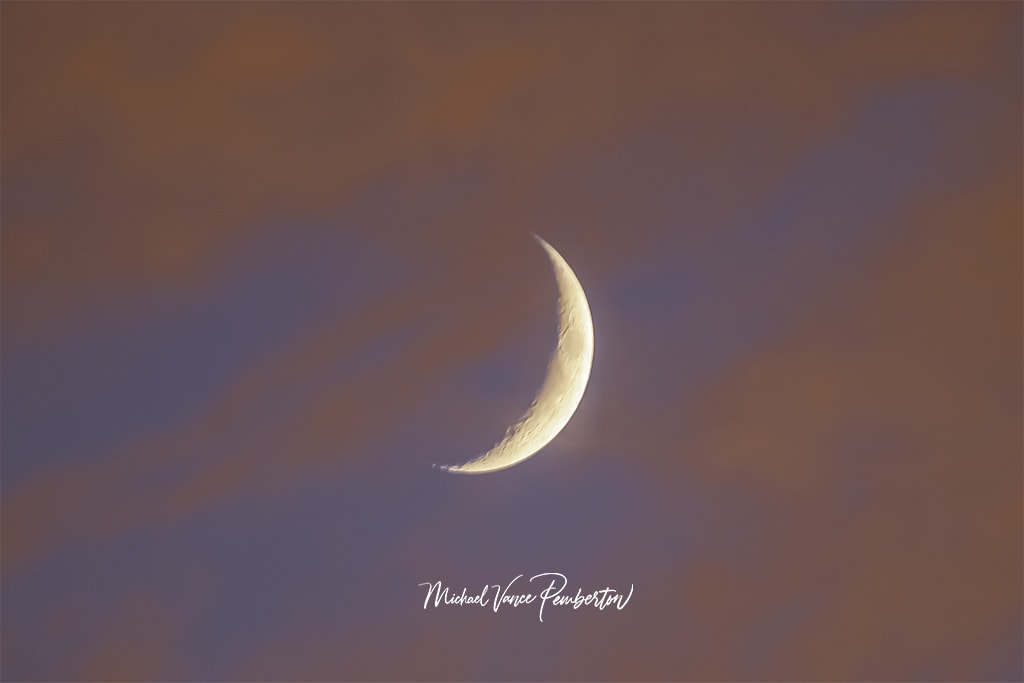
Earth’s only natural satellite, the moon, has captivated humans for centuries with its serene beauty and enigmatic allure. Photographing the moon can be challenging yet gratifying for amateur and professional photographers. The secret to capturing its celestial charm lies in understanding and adjusting the camera settings to optimize the final result. This article delves into the art and science behind lunar photography, uncovering the best settings to immortalize the moon’s splendor.
1. The Importance of Preparation.
The Foundation of Lunar Photography: Preparing for a Stellar Shoot
Before you embark on the enchanting journey of capturing the moon’s ethereal beauty, it’s crucial to lay a strong foundation through meticulous preparation. Mastering lunar photography goes beyond adjusting camera settings – it’s about creating the ideal environment that allows the moon to shine as the true star of your composition. A sequence of preparatory steps is the bedrock of success, ensuring that your lunar photoshoot yields breathtaking results.
Stability: The Triumph of the Tripod.
Imagine gazing up at the night sky, drawn into the mesmerizing glow of the moon, only to find your excitement dampened by blurry and unsteady images. This scenario is precisely what a tripod aims to prevent. A tripod is not just an accessory; it’s an essential tool that provides the stability necessary to eliminate the slightest hint of camera shake. The moon’s distance, though vast in our perception, becomes the battleground where even the tiniest vibrations can transform a potential masterpiece into a disappointing blur.
A well-chosen tripod stands as an unwavering sentinel against the forces of unsteadiness. As you set up your gear, ensure the tripod is positioned on firm ground and its legs are fully extended and locked in place. By steadying your camera atop this three-legged guardian, you create a solid foundation upon which your lunar photographs will flourish.
Embrace Remote Control: Taming the Touch.
In lunar photography, pressing the camera’s shutter button can sabotage your endeavors. Even the most delicate touch can introduce vibrations that reverberate through the camera body, ultimately degrading the clarity of your images. To counter this, a remote shutter release emerges as a sophisticated solution.
A remote shutter release severs the physical connection between your finger and the camera’s button, allowing you to trigger the shutter without inducing any vibrations. Alternatively, if your camera is equipped with a built-in timer, this can be equally effective for initiating the exposure. The timer delays the shutter release by a few seconds after you press the button, granting any vibrations ample time to dissipate. With these tools at your disposal, you can orchestrate your lunar photoshoot with a precision that preserves the immaculate details of the moon’s surface.
The Grand Unveiling: Preparing for the Perfect Shot.
As the stage is set and your camera perches atop the steadfast tripod and remote control mechanisms stand ready, you’re poised to embark on a lunar photography adventure like no other. These preparatory steps might appear to be the unsung heroes of your creative process, yet they are the artisans that mold the canvas upon which the moon will leave its indelible mark. With stability ensured and touch minimized, you’re primed to navigate the realm of camera settings, revealing the hidden splendors of the moon through your lens.
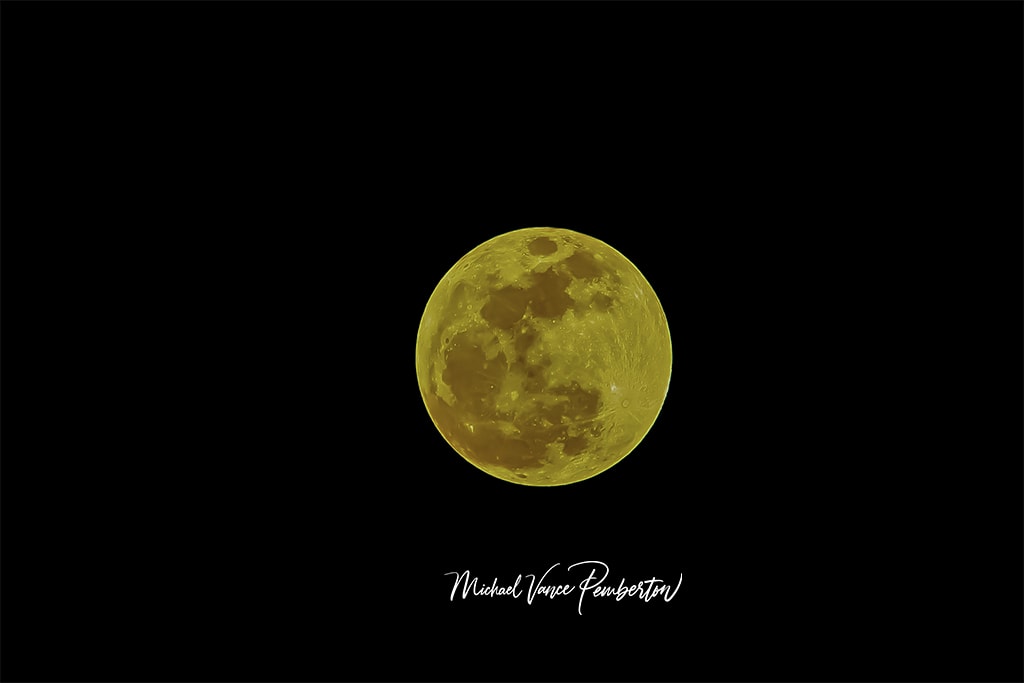
2. Lens Selection and Focusing.
Lenses as Celestial Portals: Crafting Lunar Landscapes.
In lunar photography, the lens choice is akin to selecting the perfect brush for a masterpiece – it shapes the very essence of your creation. Just as an artist selects their tools with care, photographers too must be deliberate in their lens selection, for it is this choice that serves as the conduit through which the moon’s majesty flows onto the canvas of the sensor. The right lens is not merely an accessory; it’s a window to another world, unlocking the intricate details and textures that make the moon a celestial wonder.
Telephoto and Super-Telephoto: Gazing into the Moon’s Soul.
When you set your sights on capturing the moon, the alluring embrace of a telephoto or super-telephoto lens becomes a compelling choice. These lenses possess an innate ability to pull the moon closer, revealing its secrets in breathtaking detail. The craters that form its rugged landscape, the shadows that dance along its surface, and the textures that hint at its untold stories become vivid and captivating under the magnifying power of such lenses.
A telephoto lens’s extended focal length presents the moon as the central protagonist against a vast, star-studded backdrop. On the other hand, the super-telephoto lens virtually transports you to the moon’s doorstep, unveiling features that might otherwise remain hidden from the naked eye. These lenses transform lunar photography into a voyage of discovery, turning a distant celestial body into an intimate portrait.
Focusing: The Dance of Precision.
As your lens brings the moon’s details into sharper relief, the art of focusing becomes an intricate dance of precision. While modern autofocus systems excel in many scenarios, the nuanced task of lunar photography demands a more hands-on approach. Manual focus emerges as the virtuoso’s choice, allowing you to engage directly with the composition and ensure that every edge, every crater, and every delicate line is etched with pristine clarity.
However, this endeavor requires patience – an investment of time and care to achieve pinpoint sharpness. As you venture into manual focusing, switching to Live View mode is advisable. This ingenious feature transforms your camera’s screen into a real-time preview of the moon’s radiance. By zooming in on the lunar surface within Live View, you embark on a voyage of refinement, finetuning the focus until each feature emerges with a crystalline precision that beckons the viewer to explore further.
Unveiling the Moon’s Mysteries Through Glass.
In the captivating world of lunar photography, the lens becomes your conduit to another dimension – one where craters, textures, and shadows dance together to create a symphony of visual delight. The telephoto and super-telephoto lenses act as celestial tour guides, offering the audience a front-row seat to the moon’s enigmatic terrain. Manual focusing, enhanced by the magic of Live View, provides the tools for sculpting each detail to perfection.
So, as you set your sights on the moon, remember that your lens isn’t just a piece of glass; it’s a portal that connects you to a world of lunar wonder. With the right lens and the promise of manual mastery, you’re poised to capture the moon’s essence in ways that have never been witnessed before – revealing not just a celestial body but a realm of untold stories waiting to be discovered.
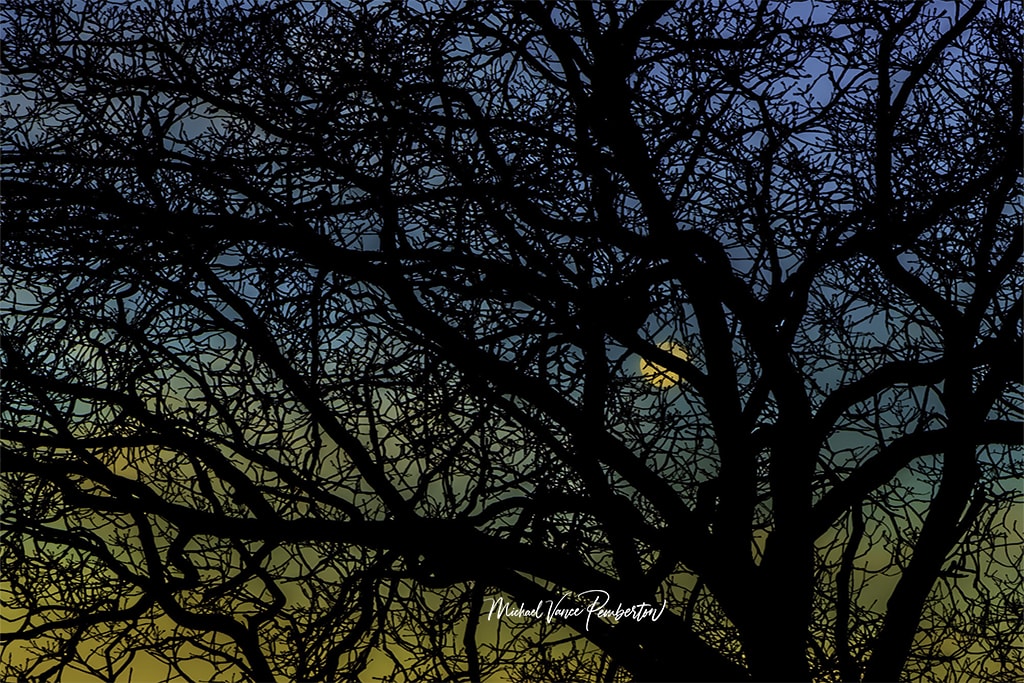
3. Optimal Aperture.
Aperture: The Cosmic Curtain of Light and Depth.
In photography, the aperture setting stands as a gateway to controlling the very essence of light – a portal that influences the interplay between clarity, depth, and artistic expression. This ethereal dance becomes particularly intricate when capturing the moon, a celestial entity that demands illumination and intimacy. The aperture, your celestial curtain, wields the power to reveal the moon’s intricate details while crafting a backdrop that accentuates its luminous presence.
Theatrics of Light: An Aperture’s Tale.
Imagine the aperture as the conductor in a cosmic symphony, orchestrating the light flow onto your camera’s sensor. As you adjust this setting, you manipulate the intensity of illumination that breathes life into your lunar composition. The moon’s brilliance – delicate yet powerful – is elegantly balanced by the aperture’s control over this cosmic dance. A smaller aperture, designated by a higher f-number, reins in the light, ensuring that the moon remains beautifully defined while concurrently rendering its surroundings with equal clarity.
The Whisper of Depth: Crafting the Canvas.
While the moon’s surface often steals the spotlight, the aperture’s impact extends beyond mere illumination. It crafts a canvas of depth, allowing the moon to stand as a three-dimensional entity against the backdrop of the universe. A smaller aperture conjures a deeper depth of field, ensuring that the moon’s details are vividly rendered while its cosmic companions remain visible in a harmonious chiaroscuro. This depth is particularly crucial when framing the moon against the stars, as it gives the composition a sense of context and scale that resonates with viewers.
Diffraction: The Delicate Balance of Clarity.
Yet, as with any cosmic balance, a challenge must be navigated with precision – diffraction. This phenomenon occurs when the aperture is set too small, causing light to bend and scatter around the edges of the aperture blades. This delicate scattering softens the image, dulling the sharpness you strive to capture. Your expertise as a lunar photographer shines in the line between clarity and diffraction.
The Harmony of Balance: Crafting Your Lunar Overture.
As you stand at the crossroads of aperture and diffraction, your mission is to find the perfect harmony between the two. Aim for an aperture setting from f/8 to f/11 – a sweet spot that encapsulates the moon’s radiance while mitigating the potential for diffraction’s caress. This balance empowers you to capture the moon’s craters, shadows, and textures with astonishing clarity and orchestrates a backdrop of cosmic brilliance that elevates the moon to the center stage it deserves.
The Aperture’s Symphony of Light and Clarity.
The aperture’s role in lunar photography is nothing short of orchestration. It crafts a celestial symphony where light and depth blend, and the moon emerges as the luminary protagonist. Through the lens of this cosmic curtain, you navigate the fine line between clarity and diffraction, weaving an image that echoes the moon’s duality – distant and intimate, powerful and delicate. As you venture, remember that the aperture’s setting isn’t just about light; it’s about painting a canvas of lunar enchantment, where every crater and shadow carries a tale.
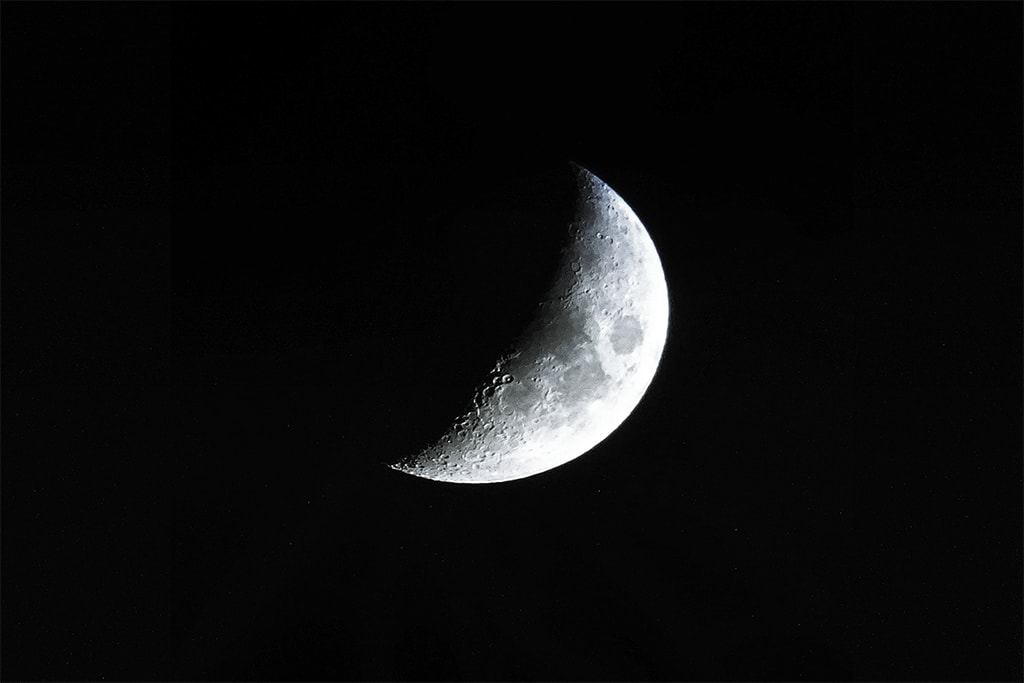
4. Shutter Speed Considerations.
Navigating the Lunar Luminosity: Mastering Shutter Speed for Moonlit Portraits.
In the ethereal realm of lunar photography, one must wield a keen understanding of light, which molds the moon’s celestial visage into a captivating composition. Amid the allure of the moon’s luminosity, an inherent challenge beckons – the moon’s light is both entrancingly bright and sublimely dim. This enigmatic balance becomes the photographer’s playground, and the shutter speed, akin to a maestro’s baton, orchestrates the interplay between illumination and subtlety.
The Sun’s Silent Symphony: Moonlit Illumination.
In the cosmic ballet of light, it’s crucial to recognize that the moon isn’t self-luminous; instead, it reflects the sun’s radiance upon its rugged surface. This interstellar dance creates a paradox – while the moon may appear luminous, it is, in fact, a delicate dance of shadows and nuances that play across its face. The lunar surface we perceive from Earth is a realm of muted luminance, basking in the sun’s embrace while revealing its contours with a gentle, alluring touch.
The Elegance of Shutter Speed: Capturing the Moon’s Mystique.
For lunar photographers, the shutter speed is a pivotal instrument that encapsulates the moon’s essence in a fleeting moment. As the sun’s brilliance imbues the moon with luminosity, the shutter speed steps in to ensure that this radiance is preserved without veering into the territory of overexposure. A fast shutter speed is your ally – the shield prevents the moon’s charm from being washed out by an excess of light, particularly when capturing a full moon in all its glory.
Crafting the Tempo: A Dance of Light and Time.
To embark on this lunar journey, begin with a relatively swift shutter speed, perhaps around 1/125th of a second. This setting preserves the moon’s intricate features while allowing enough light to grace the sensor. Yet, it’s essential to recognize that the moon’s luminosity isn’t static; it changes with its various phases and the subtleties of lunar brightness. As the moon waxes and wanes, you may need to adjust the shutter speed accordingly, allowing the right amount of light to cascade onto the sensor.
The Power of Bracketing: Capturing the Moon’s Every Hue.
In lunar photography, perfection often reveals itself through exquisite variations. Bracketing exposures become a tool of choice, enabling you to capture various images with varying shutter speeds. This technique, akin to capturing multiple musical notes, empowers you to select the perfect moment later – the image where the moon’s essence harmonizes most beautifully with the light that bathes it. Bracketing exposures is a dance of preparation, offering a symphony of choices that ensures you capture the moon’s every hue and shadow.
Shutter Speed – A Cosmic Maestro’s Baton.
As you stand before the moon’s luminous embrace, remember that the shutter speed is your cosmic maestro’s baton. It conducts a delicate symphony that balances luminosity and subtlety, capturing the moon’s beauty in every nuance of light. With a swift shutter speed, you craft the moon’s portrait while guarding against overexposure. Embrace bracketing to capture its myriad hues, and be ready to adjust your tempo as the moon’s brightness shifts with its phases. In this cosmic ballet, your mastery of shutter speed illuminates the moon’s charm in its purest form.
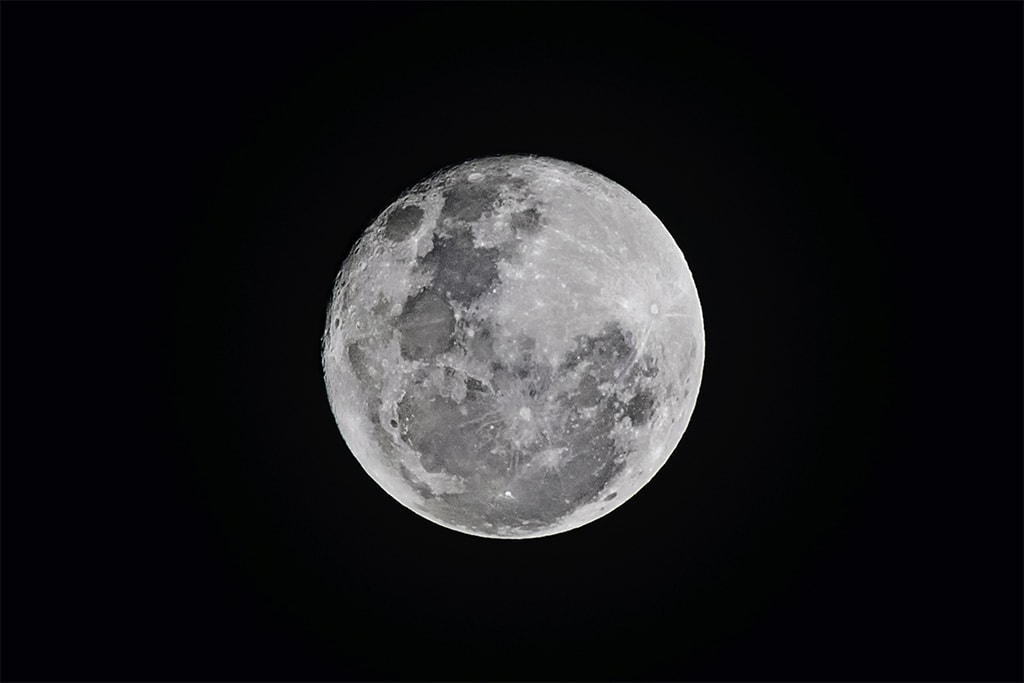
5. ISO Settings.
ISO: Illuminating the Lunar Canvas with Sensitivity and Nuance.
In the captivating realm of lunar photography, the sensitivity of your camera’s sensor becomes a gateway to unveiling the moon’s enigmatic allure. This sensitivity is orchestrated by ISO, a digital realm where light dances upon the pixels, crafting a visual tapestry that echoes the celestial symphony of the moon’s radiance. Like a conductor commanding an orchestra, the choice of ISO guides the harmony between image quality and the moon’s mesmerizing details.
The Elegance of Sensitivity: ISO’s Role in the Moonlit Drama.
ISO is the sorcerer’s wand that conjures illumination in photography. It dictates how receptive your camera’s sensor is to the available light, casting a spell that transforms darkness into detail and shadows into substance. In the context of lunar photography, ISO becomes an instrument that must be handled with finesse, as it determines how beautifully the moon’s features are revealed while preserving the integrity of your image.
The Sonata of Image Quality: The Low ISO Serenade.
In your lunar odyssey, the quest for pristine image quality is a driving force that propels your artistic journey. When the moon graces your lens, opt for a low ISO setting – a serene retreat to ISO 100 or 200. At these levels, your sensor exudes a calm composure, capturing the moon’s nuances with remarkable precision. The tranquility of low ISO minimizes digital noise, preserving a sea of exquisite details that ripples across the moon’s surface.
Whispers of Noise: The ISO’s Siren Song.
As you embark on your photographic voyage, know that the ISO’s siren song can lead you astray. As the ISO ascends, the image sensor’s sensitivity amplifies, allowing you to capture brighter images even in dim light. However, this celestial bargain comes with a caveat – an orchestra of noise, those errant specks that distort the image’s serenity. Higher ISO settings make a noise like a chorus that whispers and hums, potentially obscuring the moon’s intricate details.
The Fine Art of Balance: ISO, Noise, and Detail.
The balance between ISO, noise, and detail becomes a delicate trinity that defines your lunar artwork. The higher you push the ISO, the louder the noise crescendos, risking the erosion of more information that establishes the moon’s identity. In this cosmic equation, your role is to discover the harmony in which the moon’s features are faithfully preserved while noise remains a whisper. Each incremental increase in ISO must be met with discernment, an understanding that balances the need for brightness with the preservation of lunar essence.
ISO’s Symphony of Sensitivity and Detail.
ISO becomes the conductor’s baton that guides your photographic symphony through the moonlit night. As you stand before the luminous visage of the moon, remember that low ISO settings form a harmonious duet with the moon’s intricate features. A ballet of balance unfolds as higher ISO settings grant you more excellent brightness at the cost of noise’s whisper. In this cosmic orchestra, your mastery lies in crafting images that resonate with the moon’s celestial dance – vibrant, nuanced, and resonant with the details illuminating its mystique.
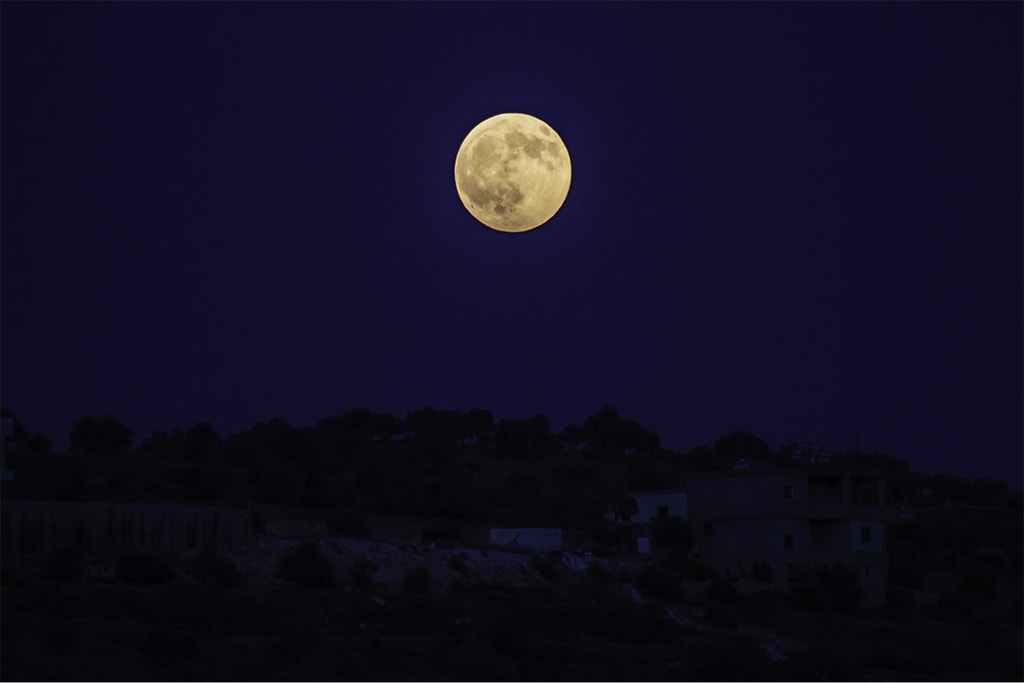
6. White Balance and RAW Format.
Color Chronicles: White Balance and RAW Format in Lunar Photography.
In lunar photography, the interplay of colors creates a symphony that resonates with the viewer’s emotions. The moon, while seemingly monochromatic, is, in fact, a canvas of subtle hues that shift and sway with the ebb and flow of light. To accurately capture this nuanced spectrum and preserve the moon’s color story, two key elements emerge as the artists’ tools – white balance and the RAW format. Together, they unlock a realm of chromatic finesse, allowing you to sculpt the moon’s hues with the mastery of a painter.
Harmonizing Hues: The White Balance Conundrum.
When photographing the moon, achieving accurate color representation is akin to harmonizing notes in a melodic composition. To orchestrate this, the white balance setting takes center stage. Set your camera’s white balance to daylight or opt for the intuitive guidance of the auto mode. These settings align with the sun’s natural hues, ensuring that the moon’s colors are presented as faithfully as possible. This orchestration harmonizes the moon’s subtleties, creating an image that resonates with the authenticity of its celestial glow.
The Moon’s Kaleidoscope: Navigating Color Temperature.
However, the moon’s colors are more intricate than a single melody – they dance along a spectrum as diverse as the universe. The moonlight’s color temperature varies, transitioning from cool blue to warm orange as it traverses the night sky. Shooting in the RAW format becomes your artist’s palette, bestowing the power to finetune color temperature during post-processing without compromising image quality. In this realm of pixel-by-pixel artistry, you become the curator of color, breathing life into the moon’s chromatic narrative.
RAW Format: The Luminary Canvas of Post-Processing.
When you opt for shooting in RAW, you embark on infinite possibilities. The RAW format captures an unprocessed digital negative, a raw canvas upon which you can paint with the hues of your vision. In the context of lunar photography, RAW liberates your creative spirit, allowing you to adjust the white balance in post-processing. The moon’s ever-changing hues can be refined to match your perception, coaxing out its nuances with a precision that leaves traditional limitations behind.
The Color Odyssey of White Balance and RAW.
As you gaze upon the moon’s luminous visage, remember that white balance and the RAW format intertwine to weave a tale of colors that transcend the ordinary. The moon’s nuanced hues, shifting and elusive, are rendered faithfully through meticulous white-balance settings. Yet, the RAW format grants you the role of an alchemist, transforming pixels into pigments and hues into harmony. In this celestial color odyssey, you wield the power to craft the moon’s palette with a painter’s dexterity, capturing the kaleidoscope of its luminous hues for eternity.
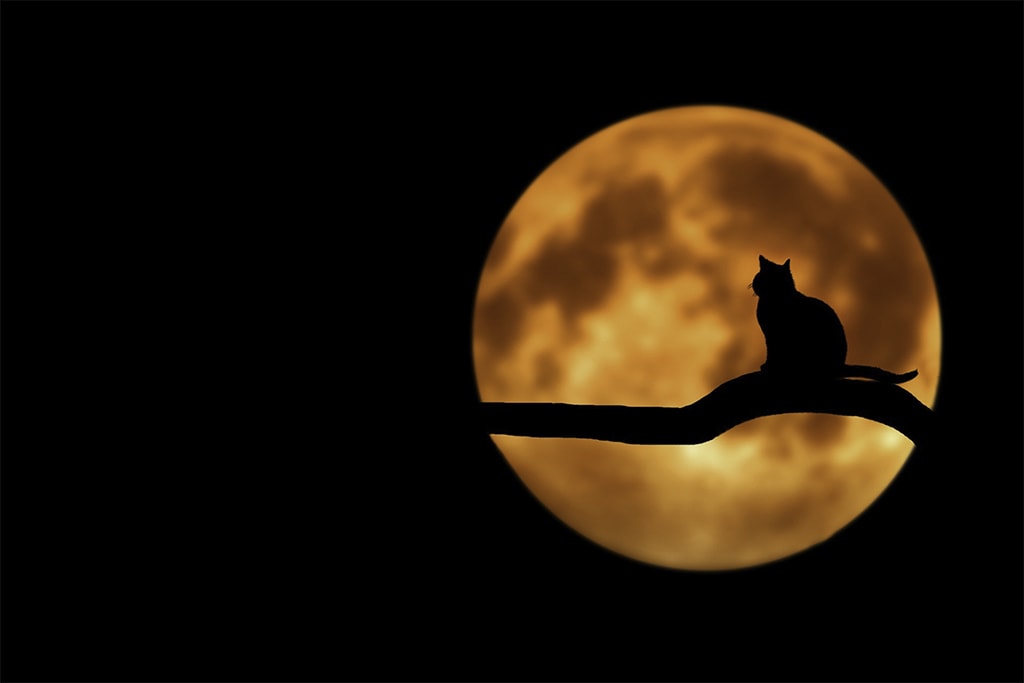
7. Image Stabilization and Mirror Lock-Up.
Steadfast Stability: A Dance Between Technology and Lunar Photography.
In lunar photography, where precision is paramount and subtlety reigns, the art of stability becomes a silent but potent muse. The fusion of cutting-edge technology and time-honored techniques crafts a canvas upon which the moon’s celestial beauty can be immortalized. Within this framework, image stabilization and mirror lock-up stand as guardians of clarity, poised to amplify the finesse of your lunar composition.
Harnessing Stillness: The Balance of Image Stabilization.
As you embark on a lunar photographic odyssey, the tripod is the foundation, grounding your camera in steadfast stillness. In this dance of stability, the camera’s image stabilization, though a marvel of modern technology, can inadvertently introduce unwelcome motion correction. When the camera is fixed upon a tripod, the movement the stabilization system aims to counteract becomes a phantom, a ghostly presence that disrupts the tranquility of your image.
Thus, when your camera or lens is blessed with the grace of image stabilization, consider it a companion for handheld photography, where its magic can shine. Yet, when your lens points moonward and your camera rests upon the tripod’s embrace, it’s advisable to temporarily suspend this marvel, allowing the stillness to flourish without interference. By doing so, you ensure that the moon’s contours and shadows emerge with the clarity that its celestial stature demands.
Echoes of Silence: The Mirror Lock-Up’s Serenade.
Within the heart of many cameras lies a mirror, an integral component of their optical magic. However, this seemingly innocuous element can also induce vibrations when it moves, imparting a subtle tremor that ripples through the camera body. To counteract this delicate quiver, some cameras offer a mirror lock-up feature – a lyrical gesture that raises the mirror before exposure.
As you prepare to capture the moon’s splendor, consider employing the mirror lock-up, transforming the camera’s symphony into an eloquent sonnet. This feature’s ethereal touch lifts the mirror to a position of rest before the shutter opens, allowing the vibrations to subside before the light paints the sensor. The result is an image where the moon’s contours are unruffled by even the faintest echoes of movement, a testament to the reverence with which you approach lunar photography.
The Ballet of Stability and Lunar Elegance.
In the enchanted world of lunar photography, stability emerges as an unsung hero, framing the moon’s ethereal beauty with unwavering poise. Image stabilization, a marvel of contemporary technology, finds its niche in handheld realms, while tripod-based endeavors revel in the tranquility of stillness. The mirror lock-up, a delicate serenade to silence, becomes your conduit to a vibration-free universe, allowing the moon’s contours to flourish undisturbed.
As you embark on your lunar odyssey, let stability be your guide – the steadfast companion that ensures every detail is etched with grace and clarity. Embrace the balance between technology and tradition, knowing that the dance of image stabilization and the melody of mirror lock-up harmonize to render the moon’s mystique in a symphony of stillness.
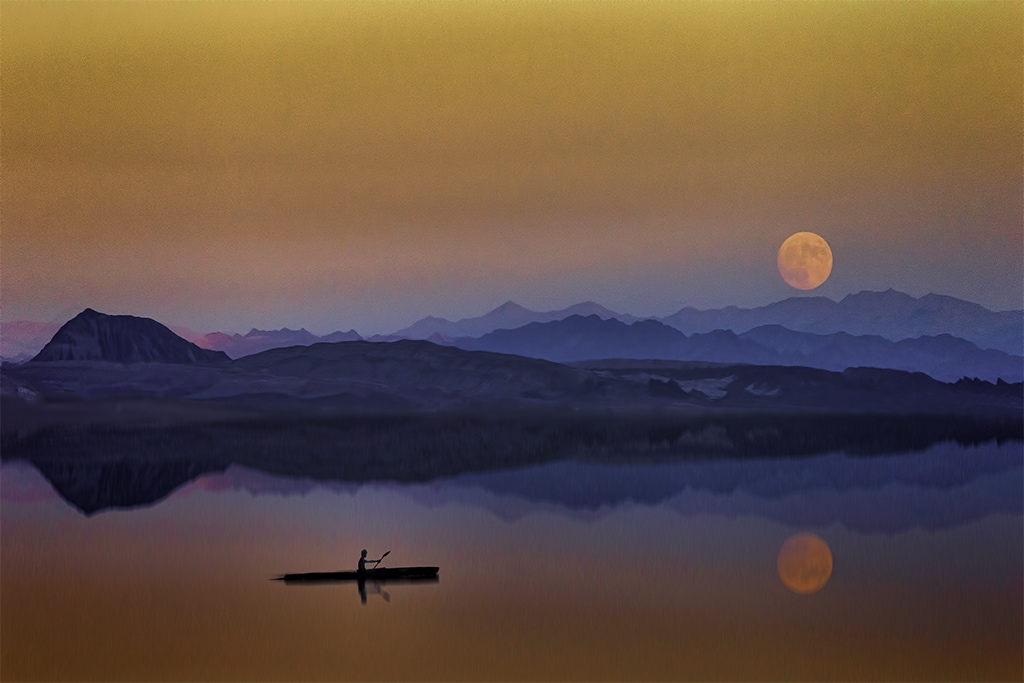
8. Post-Processing Magic.
From Capture to Canvas: Post-Processing’s Artistry in Lunar Photography.
As the moon’s celestial dance is immortalized through your lens, a new realm of creation awaits – the realm of post-processing. This digital atelier becomes the canvas upon which your lunar masterpiece undergoes a metamorphosis, evolving from a raw capture into a refined symphony of light and shadow. The delicate interplay of contrast, sharpness, and noise reduction emerges as the virtuoso’s toolkit, allowing you to embellish the moon’s enchantment and unveil its most intricate secrets.
The Art of Refinement: Unveiling Lunar Elegance Through Contrast.
Contrast is the luminary’s dance that electrifies your image with drama and dimension. In the lunar world, contrast breathes life into the moon’s contours, rendering its rugged terrain with precision. A gentle touch of contrast adjustment can transform a seemingly flat surface into an undulating landscape, where every crater casts its unique shadow, and every texture emerges in vivid detail. This artful enhancement emboldens the moon’s visage, capturing the viewer’s gaze and leading them across its enchanting surface.
The Precision of Sharpness: Carving Lunar Details with Finesse.
Sharpness is the chisel that sculpts the moon’s intricacies with precision. As you venture into post-processing, the tool of sharpness adjustment becomes your conduit to unveiling the moon’s hidden gems. A delicate touch enhances the craters’ edges, deepens the shadows within its rugged landscape, and accentuates the interplay between light and shadow. Each adjustment reveals a microcosm of lunar allure, a testament to the artistry that unfolds when sharpness is harnessed with finesse.
Whispers of Serenity: Reducing Noise for Cosmic Clarity.
In the cosmos of digital imagery, noise is akin to a distant echo that can disrupt the harmony of your composition. In lunar photography, noise can dim the radiance of the moon’s subtleties, obscuring the finer nuances that lend it its ethereal charm. Through noise reduction, you embark on a quest for cosmic clarity, a journey to silence the whispers of noise and amplify the moon’s pristine beauty. The careful calibration of noise reduction preserves the moon’s delicate textures while ensuring its luminescence remains pure and untarnished.
Post-Processing’s Symphony of Lunar Enhancement.
The culmination of your lunar photography journey brings you to the digital realm of post-processing, where your image evolves from capture to canvas. In the alchemical process of refining contrast, sharpening details, and reducing noise, you illuminate the moon’s elegance with the deftness of a master artist. Each adjustment becomes a brushstroke that unveils the moon’s secrets, a note that resonates with its ethereal symphony.
As you navigate the delicate balance of post-processing, remember that your lunar masterpiece reflects your vision and expertise. Contrast, sharpness, and noise reduction are the tools that empower you to refine your creation, elevating the moon’s allure and inviting viewers into a world of cosmic enchantment.
In Conclusion:
Photographing the moon is a blend of technical mastery and artistic finesse. You can unveil the moon’s mystique through stunning photographs by understanding the significance of preparation, lens selection, and camera settings. Experiment with different backgrounds, adapt to various lunar phases and harness the power of post-processing to craft images that showcase the moon’s celestial elegance in all its glory. So, whether you’re a seasoned Astro photographer or a passionate beginner, let the moonlight guide your photographic journey to new heights.


Recent Posts
In shadows cast by love's deceitful guise,He wandered blind, his heart the captive prize.Through realms unknown, where truth remained concealed,He followed trails of falsehood, unrevealed. Blinded...
Prepare to be amazed as the MCAS Cherry Point Air Show returns on May 11-12. This annual event, hosted by the Marine Corps Air Station (MCAS) Cherry Point in North Carolina, promises a weekend of...